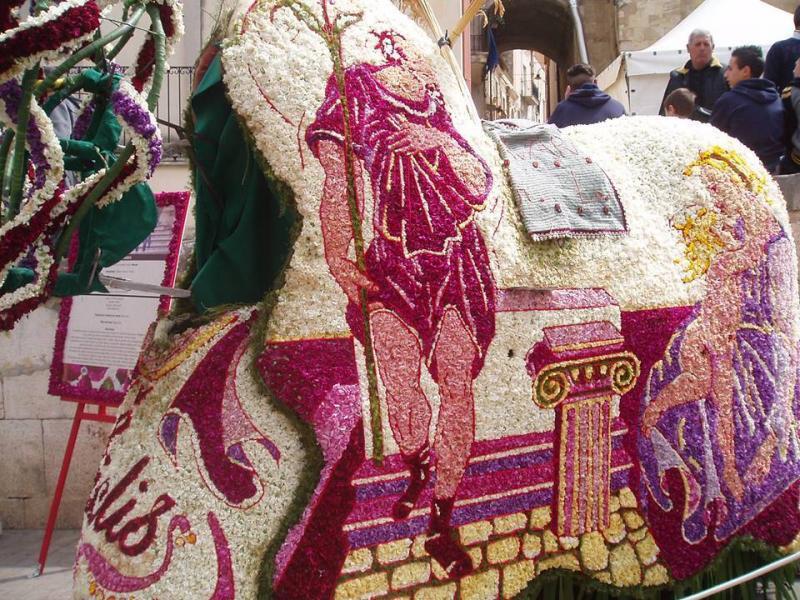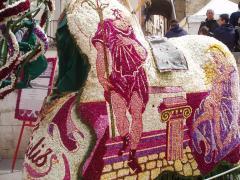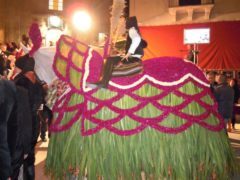Feast of San Giuseppe with Folkloristic Cavalcade
Grafted on a remnant of those sacred dramas that were staged in the Middle Ages to propitiate a good harvest, it was gradually "assimilated" by Christianity to make it a religious festival in honor of the Holy Patriarch.
Rich in suggestions is the long and laborious preparation of the extraordinary harnesses of the horses; in the "dammusi " (rooms on the ground floor of the houses), a large number of people, on a warp of palm branches, (now largely replaced by jute cloth), weave thousands of wallflowers (u balucu), composing magnificent "pictures" depicting the Holy Family and various sacred symbols.
The horses thus harnessed, mounted by riders dressed in the characteristic costumes of the peasant tradition, move from a single gathering point, near the main square of the city, heading towards the churchyard dedicated to the saint; here, an external commission examined the originality and the scenographic effect of the harnesses and the "groups of knights" and immediately after, in a riot of sounds and the cry of "PATRIA '- PATRIA' -PATRIARCA !, the colorful procession, with the Holy Family in the lead, it winds through the streets of the city where, in various points and districts "Pagghiara", phallus' around which the people of the neighborhood gather waiting for the passage of the "Holy Family".
To increase the suggestion of the characteristic parade then, i"Ciaccari": bundles of ampelodesm that the knights and common people hold in their hands, lit, to "shed light" on the Holy Family.
In addition to the religious fact, the competition between groups of "barders", the participants who, in the "competition", put their maximum effort into creating artifacts of the highest artistic and craftsmanship value adds color to the folklore.
The riders wear black velvet trousers and waistcoats, embroidered white shirts, multicolored sash woven at the hips, red handkerchief around the neck and still burritta, boots and cane pipe; each horse is "escorted" by other characters, who alternate along the procession during the evening.
Over the years this event has become somewhat "distorted", having had to adapt to the changed environmental conditions of the city.
The methanisation network underneath the road pavement no longer allows for the huge bonfires, with the stacks of branches and household goods, which were lit when the Holy Family passed and where succulent meat dishes were roasted; gradually they have become small and improvised bonfires, around which people gather to feast on sausages and chops. However, the elements of the ancient rite remain intact and with them the charm and suggestion of the "party": the fire, as sacred element, with a clear cathartic meaning; the wallflower, a spring flower, to celebrate the end of the rigors of winter and the awakening of life, the charm of an event with strong aggregating connotations, in which the entire city community still recognizes itself today.
Source: Municipality of Scicli
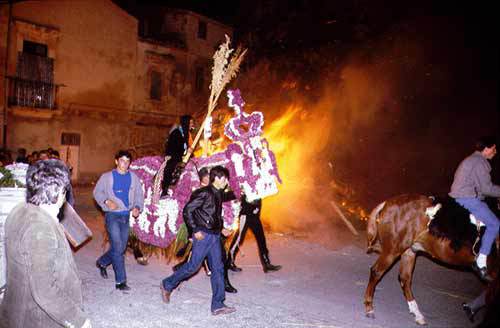
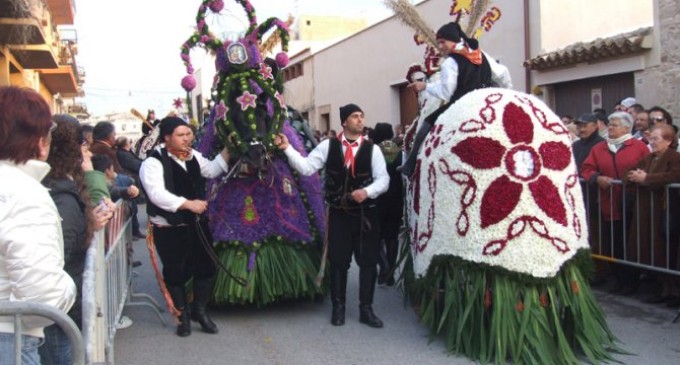
----------------
Technical sheet prepared by: Region of Sicily - Department of cultural heritage and Sicilian identity - CRicd: Regional center for inventory, cataloging and documentation and Sicilian regional film library




